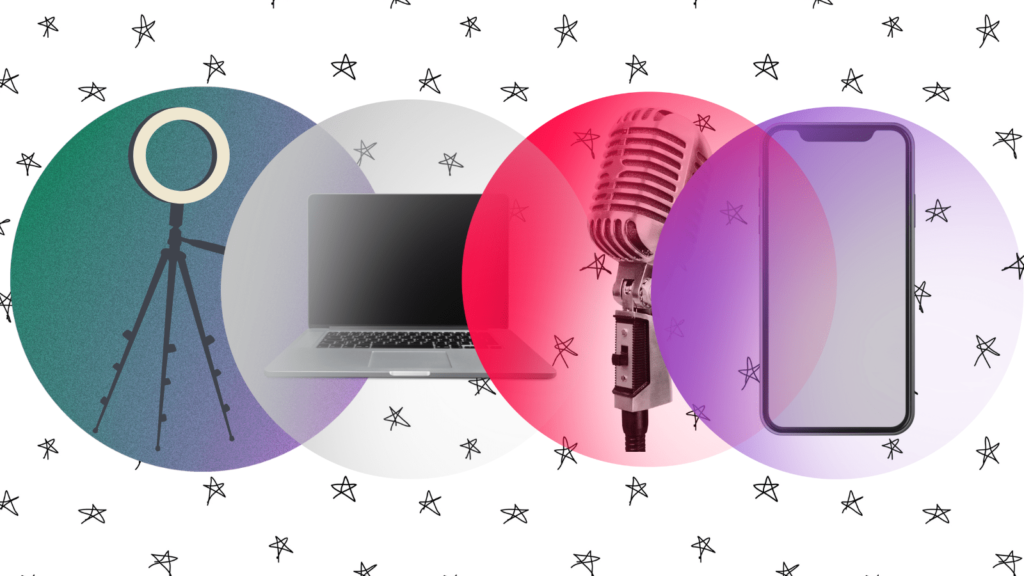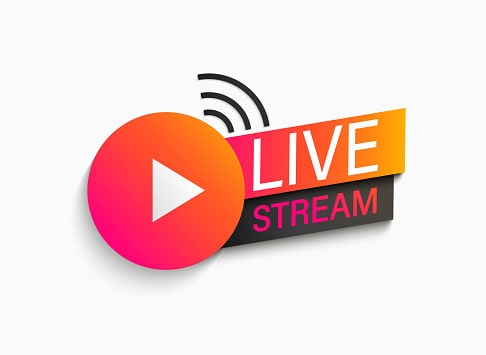Streaming is becoming more and more popular by the day. There are so many variations of streamers that it’s pretty easy to find one you fit into. It’s become a really versatile career or hobby for so many and due to its expansion in popularity – it’s even easier to get started.
Live streaming has become the norm. Whether it’s people taking part as a hobby, expanding their social media presence, or doing it as a full time career. People love to watch others chat, game and express themselves on a live video feed. Where streamers are at their most natural because mistakes are bound to happen, and it shows they’re human. No airbrushing or editing clips out. It’s real and authentic and gives viewers a great look into the streamer’s lifestyle.
You might be someone who often tuned into your favourite creators lives. Or, perhaps you tend to click in and out of various ones just to keep yourself updated. There’s nothing quite like content creators you admire going live. You get to watch them in real time, and it adds a sense of connection you wouldn’t otherwise get. Anybody can stream and that’s the brilliant thing about it. It doesn’t matter your experience level or how expensive your equipment is. You could just pick up your phone and go live on virtually any platform.
Why is there a need for live streaming?
We’re in this odd mix of everyone living for social media, but also everyone wanting to see the real person behind the mask. Social media portrays the most perfect aspects of our lives. Whereas live streams can show something different. You cannot edit a live stream. If it happened, your audience will have seen it happen at the exact moment it did. They break down a barrier that is so easy to create on social platforms. Making the streamer and audience become closer.
The view feels more involved with the streamer’s life. They can ask questions that will be answered live. Making them feel noticed by the people they love to watch. The numbers of people watching TV has severally dropped over the years. Now, people opt for streaming services like Netflix, Hulu and Prime. It means there’s far more room for variety. Platforms like YouTube have become more popular than ever. With people choosing to watch short 20-minute videos, over watching entire films or series.
It seems shorter, more concise episodes are going to be the way forward. With the world loving the rise of platforms like TikTok, people seem to want short and sweet over lengthy alternatives. This is where streaming comes in. Streams can last for any length of time. It really depends on the type of stream you’re trying to create. Often gamers will host streams that last for hours, but there are many creators that will do short but sweet streams. Creatives may check in via lives, giving quick updates on what’s been happening in their world.
People can come and go as they please with streams. That’s the beauty of it. You may go live and only have a handful of viewers, but over time this will build up. Your followers can join in when they want to. It’s not something you’ll miss out on if you’re not there when it starts. Also, if you do miss one, it’s highly likely the creator will go live again shortly. It tends to be a regular thing. So, you’ll start to get the same names coming back again. Making it a great way to grow your audience.
Things to consider before going live
Rather than just pressing the button to go live and hoping it works out, it’s a better idea to plan ahead. Consider what you want to talk about. Is there a purpose to your livestream? Do you have a message you need to get across? A topic you want to discuss? Or maybe something you want to show your audience. It’s important to have an idea of where your live is heading before starting it.
- Find your niche – What topics will you cover? How will your live stream differ to your competition?
- Plan – Consider the length of the stream. What time will suit you and your audience best?
- Let your audience know – Promote your live. Make sure people know it’s happening so they can attend.
- Prepare – If you need lighting, test it first. Ensure your camera or phone is fully charged. Cover all bases so nothing goes wrong during the live.
What equipment do you need?
Being prepared is key. So, having the equipment you need is vital before you attempt to go live on any platform. With that being said, you don’t necessarily need to buy the most expensive products out there. Often, equipment you already have is more than enough. The majority of streamers will go live on their smartphone. Something you already use every day. When it comes to buying extras, do your research to see what you need that will fit within your budget. The more expensive items aren’t always the best for you.

A camera or smartphone
It may depend on the type of content you want to stream to which you use. A lot of gamers will opt for a camera as the battery life lasts longer, and they can get the best quality shots of the games they’re playing. However, if you’re a day-to-day creator, sharing your life, you may stick to using your smartphone instead. There’s no need to buy an expensive camera if your phone will do the job.
Microphone
Your camera or smartphone will have a microphone, but it won’t always be the best quality. If you’re sat in a quiet room, with no excess background noise, then it might be exactly what you need. However, if there’s a lot going on, or you’re someone who streams at various locations – it will be best for you to invest in a microphone.
Lighting
If you’re going to use natural lighting, you’ll need to stream at certain times of day. You’ll have to be sat in the right spot for the sun to light up your video. To avoid this, and be able to stream at any time of day, it may be a good idea to buy some lighting equipment. You don’t need lots of it to get started, perhaps just a ring light at first. From there, you can expand.
Software
Depending again on what you’re streaming, you might need the correct software. Many streamers use encoders which take the video and audio directly from your computer and submits it to the streaming platform. This is something for you to look into as and when you need it. Perhaps on platforms like Twitch you may want it, whereas somewhere like Instagram, you wouldn’t.
A strong internet connection
There’s nothing worse than your connection dropping halfway through your live. It will look messy and your audience might drop off depending on how long it takes for the connection to come back. You might find people stop watching you all together because your stream is always pixelated, and they can’t understand what’s being said. Make sure your internet speed is fast enough.
The best way to find out how to stream is by doing it yourself. With that being said, of course you want it to be a success which is why we have provided you with some tips before you get started. Try watching other people stream first. Immerse yourself in the world of streaming, and you’ll soon become a natural. It’s normal to be nervous at first, the thought of going live can intimidate a lot of people. But, as you practise, you’ll soon improve.






